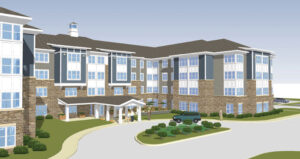As America’s aging population continues to reshape real estate demand, senior housing has emerged as one of the most compelling asset classes for long-term investors. This sector encompasses a range of housing models—including independent living, assisted living, and memory care—and provides essential services for older adults in need of lifestyle support, health management, and community connection.
Not only can investing in senior housing offer attractive returns and recession-resistant cash flow, but it also allows investors to contribute to a meaningful cause: improving the lives of seniors during a critical stage of life. However, like all investments, senior housing requires careful planning, thorough research, and a deep understanding of the unique risks and rewards involved.
Potential Benefits
Recession Resistance
Senior housing is considered a defensive asset because of the consistent demand for its services. Unlike retail or hospitality properties that fluctuate with consumer spending, senior housing serves a population with needs that are largely independent of the economic cycle. Seniors still require care, housing, and daily support even during downturns. This demand stability can provide a critical layer of protection for investors when other sectors experience volatility.
Attractive Returns
Over the past decade, senior housing has outperformed many traditional real estate sectors. With average annual returns reported around 11.4%, investors benefit from both regular income and property appreciation. The combination of rental revenue, ancillary services, and strong demographic drivers creates a highly attractive risk-adjusted return profile for those with a long-term outlook.
Growing Demand
The U.S. Census Bureau projects that by 2035, older adults will outnumber children for the first time in American history. The 80+ age group is expected to grow by over 36% in the next 10 years, driving a surge in demand for all forms of senior housing. At the same time, more seniors are choosing to age outside the traditional family home, either due to the lack of family caregivers or a preference for community living. This demographic tailwind is one of the most compelling arguments for long-term investment in the space.
Diverse Investment Options
From publicly traded REITs to private partnerships and adaptive reuse projects, investors can choose how hands-on or hands-off they want to be. For example, institutional investors may favor stabilized portfolios or funds, while individual investors might participate in syndications, joint ventures, or direct acquisitions. This flexibility allows for tailored risk profiles, liquidity options, and levels of involvement.
Passive Income
Senior housing assets are typically cash-flowing properties with residents paying monthly rent and service fees. For investors seeking predictable passive income, especially during retirement, senior housing offers the potential for monthly distributions while also capturing long-term equity appreciation.
Risks to Consider
Legislative Risk
Senior housing operates in a highly regulated environment, especially in assisted living and memory care. Regulations cover everything from staffing ratios and meal quality to fire safety and resident rights. Changes at the federal, state, or local level can increase operational costs or impose compliance burdens. Investors must be prepared for shifts in policy and maintain properties in good standing with licensure and inspections.
Occupancy Rates
Occupancy is a key driver of profitability. A dip in occupancy—whether due to local competition, poor management, or a public health event—can significantly impact net operating income. Understanding local market supply and demand dynamics is crucial before investing, as is evaluating a property’s historical and projected occupancy trends.
Competition
In high-growth metro areas, the senior housing market can become saturated with new developments. Developers and investors flocking to the same markets can lead to overbuilding, reducing pricing power and compressing margins. Understanding micro-market dynamics and identifying underserved locations is vital for long-term success.
Operational Challenges
Unlike multifamily or office real estate, senior housing is part real estate and part hospitality and healthcare. It requires competent on-site management, qualified nursing and caregiving staff, well-coordinated service delivery, and consistent resident engagement. Investors who lack operational expertise should partner with or vet experienced operators, as poor operations can quickly erode an otherwise strong investment.
Specific Property Risks
Not all senior housing is created equal. Independent living communities may be vulnerable to competition from luxury apartments or active adult housing. Assisted living carries higher operational complexity and costs. Memory care requires specialized programming and can have higher staff turnover. Each asset type carries its own blend of risk and opportunity, making property type selection a strategic decision for investors.
Types of Senior Housing Investments
Independent Living
These communities are geared toward seniors who are largely self-sufficient but seek social connection, convenience, and amenities such as housekeeping, dining, fitness centers, and transportation. These properties are typically less labor-intensive and may resemble upscale apartment communities, making them more familiar to traditional real estate investors.
Assisted Living
Assisted living facilities serve seniors who need help with daily activities such as bathing, dressing, medication management, and mobility. These communities operate under higher levels of regulation and require skilled staffing and safety infrastructure. They typically generate higher per-unit revenue but come with increased operating complexity.
Memory Care
Memory care facilities are tailored specifically to individuals with Alzheimer’s disease and other forms of dementia. These communities offer secure environments, structured routines, and cognitive programming. Staffing requirements are specialized, and while margins can be attractive, this segment demands exceptional operator expertise and oversight.
REITs (Real Estate Investment Trusts)
For investors seeking a liquid, diversified, and passive way to gain exposure to senior housing, REITs are a viable option. Publicly traded REITs like Welltower, Ventas, and National Health Investors own and operate senior housing assets, allowing investors to benefit from the sector’s performance without direct ownership or operational responsibility.
Direct Private Investments
These deals involve acquiring senior housing properties or funding ground-up developments, often through syndications, partnerships, or private equity funds. While they can offer higher returns and tax advantages, they typically require more capital, have limited liquidity, and carry greater risk—especially if the operator is inexperienced.
Co-ops
Senior housing cooperatives allow residents to purchase a share in the community, giving them an ownership stake and voting rights. This model is more common in active adult communities and is gaining interest among retirees who want control over their living environment, but it may be less familiar to traditional investors.
Before Investing
Thorough Research
Understanding market dynamics, asset types, regulatory requirements, and operator capabilities is crucial. Investors should research population trends, local healthcare infrastructure, income levels, and state-specific licensing requirements before choosing a location or asset.
Due Diligence
Every property should be evaluated based on its financial performance, historical occupancy, physical condition, staff stability, and reputation. A full review of profit and loss statements, deferred maintenance, third-party vendor contracts, and regulatory compliance history should be part of any acquisition process.
Risk Assessment
Not all investors have the same risk profile. Determine whether you’re seeking capital preservation, income, or growth. Are you comfortable with illiquid investments? Do you want control or a passive role? Clear answers to these questions help shape your investment path.
Professional Advice
Senior housing investments are nuanced and often complex. Work with seasoned advisors, real estate attorneys, healthcare consultants, and tax professionals to ensure your investment strategy is sound. The right team can help navigate legal compliance, structure deals effectively, and align investments with your overall financial goals.
Conclusion
Senior housing represents a rare blend of strong demographic fundamentals, attractive financial performance, and social impact. For investors with a long-term horizon and a desire to diversify into a recession-resilient asset class, senior housing can offer compelling opportunities.
However, success in this sector requires more than capital—it demands knowledge, strategy, and the right partners. By understanding the risks, performing diligent market research, and aligning with experienced operators, investors can unlock both financial rewards and the deep satisfaction of improving lives.
Note: This article is for educational purposes only and does not constitute financial advice. Always consult with qualified professionals before making any investment decisions.






